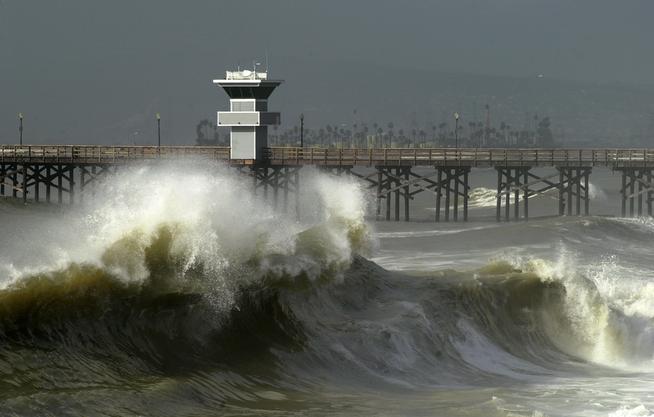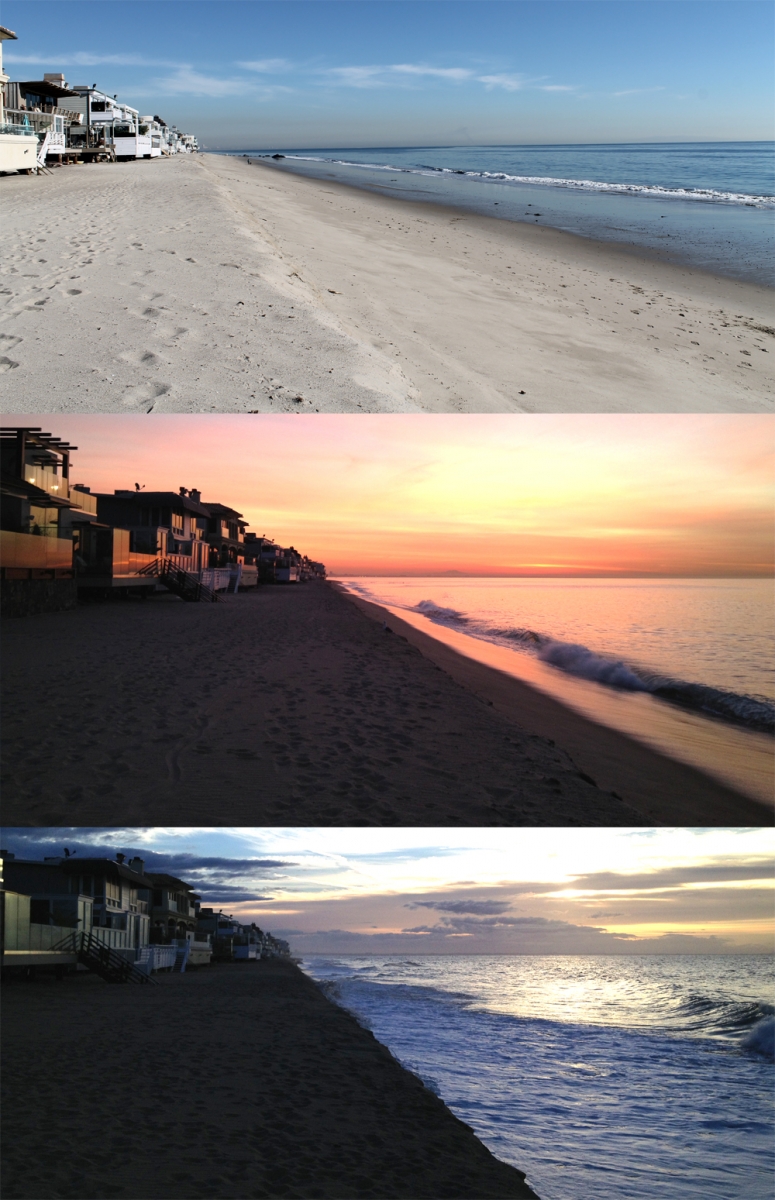Dana Murray, Heal the Bay’s senior coastal policy manager, reports on a promising new statewide policy to minimize the impacts of sea-level rise on coastal communities.
An incoming swell may excite a surfer, a rainstorm may offer an Angeleno drought relief, and extreme tides offer a tide-pooler opportunities for sea shore exploration. But pair those same events with rising sea levels due to climate change, and the outcome is destructive and dangerous. Beach sand disappears, coastal bluffs erode and fall into the sea, and homes and businesses are flooded.
These aren’t images from some doomsday movie, this is real life and happening now in some places along California’s coast. Higher sea levels, high tides and storm surges that force waves well past their usual reach pose very real threats. And when these forces coincide, significant inundation can lay siege to coastal communities, freshwater supplies, wastewater treatment plants, power plants, and other infrastructure… not to mention public health and the environment.
So, what should we do? How can we prepare for coastal disasters?
California’s Coastal Commission has developed one way to prepare California – by adopting the state’s first Sea Level Rise Policy Guidance. After years of development and refinements, the Coastal Commission recently voted unanimously to adopt California’s Sea Level Rise Policy. Intended to serve as a scientific and planning resource for a variety of audiences, the policy provides an overview of the best available science on sea-level rise for California and recommended methods for addressing it in coastal planning and regulatory actions.
Highlighted in Chapter 7 “Adaptation Strategies”, the policy lays out ways that we can prepare coastal communities by helping them take steps now to avoid detrimental impacts from sea-level rise. These include adaptation options such as wetland, dune, and beach restoration, as these habitats will help buffer communities from sea-level rise and storm surges while enhancing coastal resources.
Maximizing natural shoreline values and processes, while avoiding armoring our shoreline with a slew of sea walls, are goals outlined. Beach armoring, especially in the form of sea walls and rocky revetments, is known to increase wave reflection and result in the narrowing of beaches. Instead, communities can protect and restore critical habitats, such as wetlands and dunes, and plan out a buffer zone so that wetlands and dunes can migrate inland while providing inland infrastructure with natural shoreline protection.
The policy also includes options that change the way we look at building along our changing shorelines. We should prioritize overall sustainability and life of infrastructure, and identify places where development can retreat inland. As the sea seeps inland, sand is eroded from beaches and bluffs, and landowners and communities are faced with the decision whether to spend large amounts of money to build sea walls against a crashing sea, or step back from the shoreline. That can mean moving trails, buildings, or parking lots inland. Surfers Point in Ventura, for example, is beginning to retreat from the ocean.
Heal the Bay commends the Coastal Commission’s leadership on climate change adaptation. This policy gives clear guidance to local governments for measures they can take to protect against and prepare for sea-level rise. It is imperative that coastal communities advance environmentally sound adaptation solutions to be resilient in the face of climate change. We hope this policy will lead to more environmentally sound, nature-based adaptation strategies.
The environmental, economic, and social impacts of sea-level rise in California underscore the importance of addressing and planning. To demonstrate the impacts of sea level rise, the policy highlights results from the Heberger et al. (2009) study that found that the Ports of Los Angeles and Long Beach are vulnerable to significant flooding from sea-level rise. Given that these two ports handle about 50% of the containers shipped into the United States, the rise could disturb the efficiency of goods movement, resulting in serious economic implications for California and the U.S.
At the Coastal Commission hearing, some cities came out against the policy, hesitant to see the state adopt a policy that might not align with their cities’ current shoreline visions. But, thanks to the strong leadership and scientific understanding of commissioners that take the protection and stewardship of our coastal resources seriously, the policy was passed unanimously. Demonstrating national attention to California’s climate preparedness, a representative from the National Oceanic and Atmospheric Administration (NOAA) testified at the hearing that the policy will also form the base from which other states will begin to plan for climate change along their shorelines.
Heal the Bay recognizes that preparing for climate change will require time, money, and planning. But it’s an investment in the long term health of our coastal communities that we can’t afford to let slip away into the sea.





